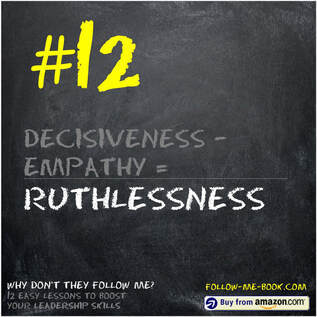In Search of the Least-Worst Alternative
 In 1985, The Coca-Cola Company introduced a new formula for its Coca-Cola product, calling it “New Coke.” Consumer reaction to the new formula was negative, and within three months the original formula was revived and rebranded as “Coca-Cola Classic.” The company was faced with a decision-- keep the new formula and try to change consumer perception or abandon the product. The New Coke product was ultimately discontinued in July 2002. As the company navigated their choices, the alternatives were about how to recover from a bad situation, with its management faced with minimizing a profit hit and negative consumer sentiment. Their decision path ultimately worked out well (with some speculating that New Coke was a marketing ploy to stimulate sales), but the decisions along the way were painful choices meant to minimize loss.
In 1985, The Coca-Cola Company introduced a new formula for its Coca-Cola product, calling it “New Coke.” Consumer reaction to the new formula was negative, and within three months the original formula was revived and rebranded as “Coca-Cola Classic.” The company was faced with a decision-- keep the new formula and try to change consumer perception or abandon the product. The New Coke product was ultimately discontinued in July 2002. As the company navigated their choices, the alternatives were about how to recover from a bad situation, with its management faced with minimizing a profit hit and negative consumer sentiment. Their decision path ultimately worked out well (with some speculating that New Coke was a marketing ploy to stimulate sales), but the decisions along the way were painful choices meant to minimize loss. A huge part of a leader’s job is making decisions based on informed alternatives which articulate both the positive and negative consequences of the decision. The typical mode of operation is to look at pros and cons and do a pros to cons weight assessment of which alternative’s pros best outweigh the cons. But what about when there aren’t any pros, yet a decision needs to be made? I’ve seen leader decision-making hobbled because there is no good alternative in the decision set, looking for pros in a sea of cons. There’s no good alternative, so it’s about choosing the least-worst alternative.
The mechanics of least-worst alternative management are really no different than looking for a best alternative. It’s all about the mindset decision makers adopt when embarking on the decision. Being overt about recognizing the chosen decision isn’t about bringing benefit, but about minimizing hemorrhaging. It gives decision makers the freedom to make the best decision without the burden of justifying the lack of pros supporting the alternative.Next time you are faced with choosing between worse and more-worse alternatives, keep the following six factors in mind:Forget about perfection – Perfect alternatives with no downside rarely exist. Don’t put unrealistic standards on decision alternatives that can’t be achieved.Set expectations with decision makers up front – Be deliberate with the decision-makers that the alternatives aren’t optimal and that you’re looking for the least painful course of action. Using the term “least-worst alternative” helps cue decision makers as to the type of decision they’re making.Ensure the right people are involved in the decision making – looking at worst-case alternatives may mean including additional people, i.e. someone from the public relations group in a decision affecting customer perceptions, to provide input. Be clear on whether they only provide information to support decision-makers or are included as decision makers. Articulate worst cases for decision alternatives – For each alternative ask the question, “What’s the worst thing that will happen if we do this?” Make sure the worst case is reasonable and aligns to the organization’s mission and values. Also be on the lookout for unreasonable “the world will end” scenarios from pessimistic decision makers.
Assign a singular accountability owner for the chosen alternative – Alternatives that have fuzzy or undefined ownership most likely won’t get done. Ensure there is a singular named owner of the alternative with clear articulation of what needs to be done and when it needs to be done by.Define a follow up rhythm – Define how and when the accountable owner will update decision makers on chosen alternative progress and what the course of action will be in the event the chosen alternative is not working. Also be clear as to whether updates will be via meeting or email.
Navigating through bad alternatives isn’t fun, but having the ability to skillfully and objectively get to a least-worst alternative is a crucial skill the best leaders possess. Keep top of mind whether you’re making a maximize-benefit or least-worst decision and ensure your decision makers understand the type of decision they’re making.
Published on August 08, 2019 02:53
No comments have been added yet.



